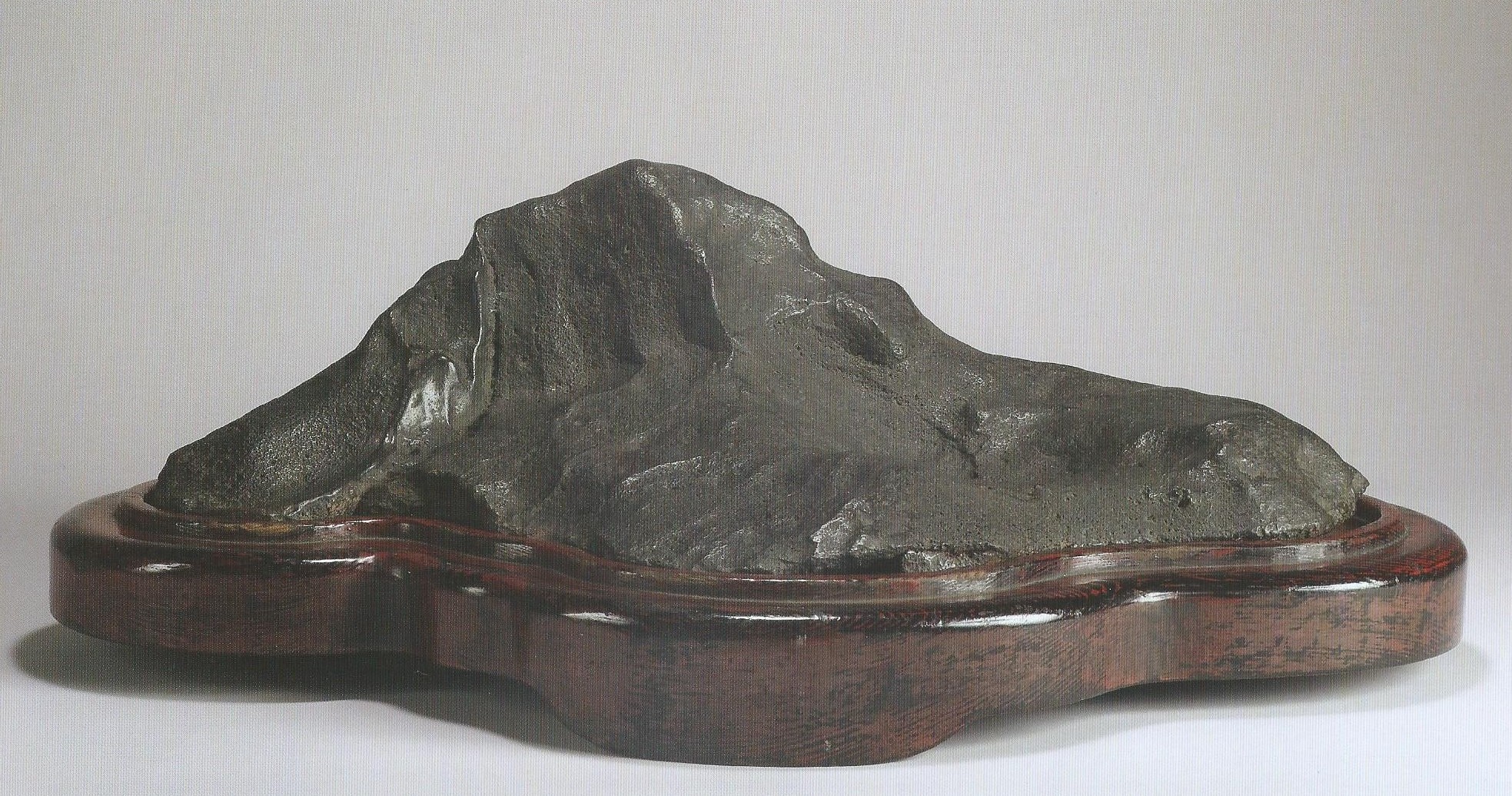Kurokamiyama, the Black Hair Mountain
 |
|
Bonseki "Kurokamiyama"
Kan’eiji, Ueno
w. 47,5 x d. 34 x h. 14,5 |
| |
|
|
|
“This stone is a famed masterpiece of the Japanese suiseki world, and has long been kept in Ueno's Kan’eiji di Ueno temple along with the Illustrated Handscrolls of the Origins of Kurokamiyama that tell its well-known story.
According to these handscrolls, the stone was discovered in Lake Chuzenji in Nikko.
Its mountainous form is composed of an elegant, deep black material and has the air of a magnificent, sacred peak.
It was named “Kurokamiyama“ (lit. Black Hair Mountain) by late Edo period (1615-1868) Chief Councilor to the Tokugawa shogunate Matsudaria Sadanobu, also known as Rakuo (1715-1829).
Kurokamiyama is another name for Nikko's Mount Nantai, and the name was chosen because of the stone's close resemblance to it.
This stone helps us to understand suiseki's (bonseki's) place in the Japanese cultural history, and illustrates the deep value placed upon it by cultural figures of the Edo period.
It is a great honor to have this stone and its accompanying handscrolls as special entries for the opening of this new exhibition, and a joy to have them grace the first pages of the catalogue."
|
|
Composed of two volumes of ink and polychromy on paper, the Illustrated Handscrolls of the Origins of Kurokamiyama were completed in 1814 by shogunal official Nakamura Yadaifu, lso known in literati circles by artistic name Butsuan (1751-1834), with the inscription on their storage box brushed by Kose Toshimasa (1767-1834) nel 1822.
Butsuan himself wrote the text of the scrolls, while the paintings were executed by Kuwugata Keisai (1764-1824), an official painter of the Tsuyama domain.
According to the handscrolls, Kurokamiyama was found in Nikko's Lake Chuzeiji in the ancient past, and was kept for generations by the Yamaguchi family living in the area of the nearby Jakko waterfall. When the Toshogu shrine in Nikko was undergoing repairs in the Kansei era (1789-1801), Butsuan went to overseeparts of the work in his capacity as an official for the Tokugawa shogunate, and learned of the stone's whereabouts from a member of the Saruhashi family of Shinto priests residing there. After long negotiations, Butsuan was able to obtain the stone in exchange for a decorative golden sword that was part of his family collection. Sometime later, the stone came to belong to Matsudaira Sadanobu (Rakuo) and was thereafter donated to the temple Kan’eiji where it remains today.
From the text and illustrations of the handscrolls, we can gain insight into just how much bonseki were admired by cultural figures of the early nineteenth century, and the greater place that bonseki (moder day suiseki) has in Japanese culture."
|
|
| |
|
|
 |
|
"The scene of Butsuan offering the golden sword to the Yamaguchi family in exchange for the stone." |
| |
|
|
 |
|
"Kurokamiyama surrounded by literati of the time." |
| |
|
|
 |
|
"The red lacquer box, where Kurokamiyama is stored in, serves not only as the stone's storage box, but the lower part also functions as its daiza. All surfaces of the lid are covered in the design of a rugged old pine and the Tokugawa family's triple-hollyhock crest, and judging from the handscrolss it would seem that it was commissioned by Rakuo when the stone entered Kan’eiji 's possession”.
|
| |
| (by Official Catalogue of "Japan Suiseki Exhibition" - Nippon Suiseki Association, Inc.) |
| |
|
|
|


